Close-up image captured by NASA’s Solar Dynamics Observatory (SDO) shows the July 6, 2012 X-class flare captured in the 171 Angstrom wavelength.
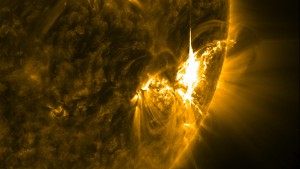
Credit: NASA/SDO/AIA

Close-up image captured by NASA’s Solar Dynamics Observatory (SDO) shows the July 6, 2012 X-class flare captured in the 171 Angstrom wavelength.

Credit: NASA/SDO/AIA
 The 7849km AO-7 world record set by AC0RA and I (NZ5N) on July 2 lasted less than 48 hours. Wyatt once again woke up early and this time drove 150 miles to EN41ad. We had a 30 second QSO at 0949Z to extend the record to 7903.55km. Thanks, Wyatt, this has been fun.
The 7849km AO-7 world record set by AC0RA and I (NZ5N) on July 2 lasted less than 48 hours. Wyatt once again woke up early and this time drove 150 miles to EN41ad. We had a 30 second QSO at 0949Z to extend the record to 7903.55km. Thanks, Wyatt, this has been fun.
NZ5N record information.
Source: Amsat-NA Mailing List
Pi9CAM Restoration – 3, 2, 1 and lift off
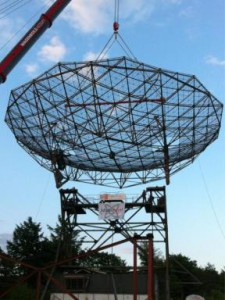
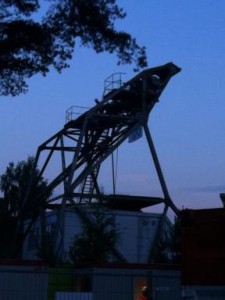
That twittered Frederiek Westra Holthe one of the spectators who insisted to keep looking until the first flying saucer above the Dwingelderveld became visible. With that spectacle came an end of a long day. Around 21:15, the dish came loose from the base.
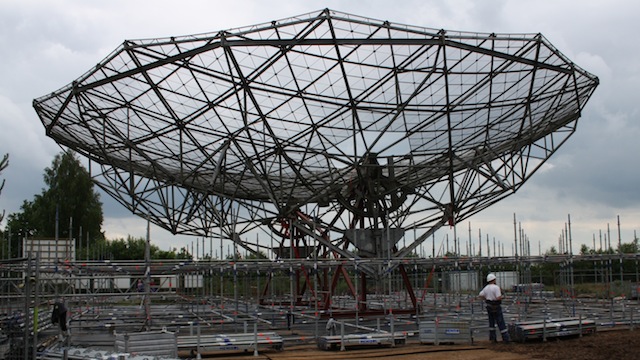
Source: Camras Website
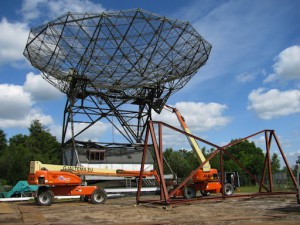 The dismantling of the dish in Dwingeloo has started. Today, the dish would be lifted only by an error in the calculation of the weight is was not successful. The starting points of weight are not correct and there is more than 40 tons of force needed to be able to lift the dish.
The dismantling of the dish in Dwingeloo has started. Today, the dish would be lifted only by an error in the calculation of the weight is was not successful. The starting points of weight are not correct and there is more than 40 tons of force needed to be able to lift the dish.
Source: (www.camras.nl) The lift of the mirror is delayed for a few hours. They could not move the 25 meter-wide mirror of the telescope says Andre van Es (Chairman CAMRAS). The dish appears to be heavier. There is always assumed that the mirror weighs 30 tons. With a reserve of 30% would pull the mirror at 38 tonnes in motion to come. But this still seems to sit stainless. There are first extra counterweights invoked to stabilize the crane. Then tonight a new attempt in which the tensile force is increased. My biggest concern is distortion of the mirror and the stability of the goat as the mirror is much heavier than the 38 tons that already takes, says André van Es. See also RTVDrenthe (Dutch comment).
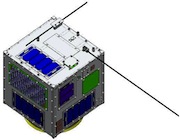 Built by students at the Kyushu Institute of Technology (KIT) HORYU-2 is 350 * 310 * 315 mm and mass is 7.1 kg. Launched into a Sun-Synchronous 680 km orbit with an inclination of 98.2°and operate on 437.325 MHz using either 20 wpm Morse Code or 1200 bps AX.25 GMSK.
Built by students at the Kyushu Institute of Technology (KIT) HORYU-2 is 350 * 310 * 315 mm and mass is 7.1 kg. Launched into a Sun-Synchronous 680 km orbit with an inclination of 98.2°and operate on 437.325 MHz using either 20 wpm Morse Code or 1200 bps AX.25 GMSK.
According to the latest tle-new data HORYU-2 has got NORAD number #38240 and therefore it was object 2012-025D and not the B object instead of what many thought.
An animation showing most of the Aalto-1 mission phases.
Aalto-1 is a student satellite project of Aalto University, Finland. When launched, it will be Finland’s first satellite. It is planned to operate at VHF-UHF and there will also be an S-band transmitter. Up to 8 watts of power will be available from the solar panels.
The main payload of the satellite is a novel tiny Fabry-Perot imaging spectrometer, developed by VTT, Finland. The primary scientific goal of the mission is to demonstrate the feasibility of MEMS Fabry-Perot spectrometers for space applications. This miniature technology can be used in nanosatellites for large a variety of remote sensing applications in the future.
High spectral resolution images can be used for water quality monitoring and land use classification.